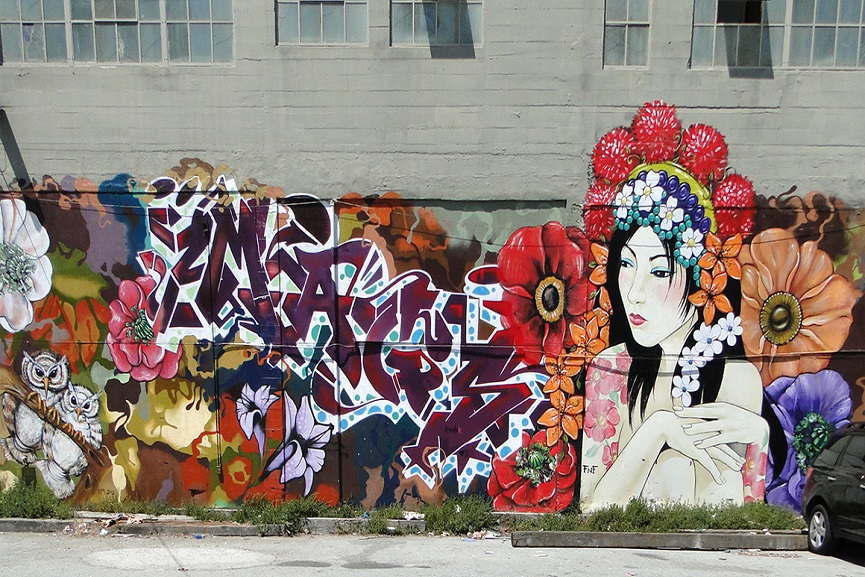Robert Angotti, Chief Instructor, North Wind Aikikai
Our Young Artist Competition has been a real pleasure. We had several applicants and we were able to award a project to two very gifted young artists. They have been busy working on their pieces and I am really enjoying their dedication and effort. We will be introducing you to these young artists as they wrap up their work. We will also be introducing you to some of the other young artists who participated in our competition.
Several people have asked me what the inspiration was for this event. I think there are several things that felt important to me as I was formulating the idea. As these artists work I will try to share some of those ideas here.
Starving for Art
Our culture tends to monetize and monopolize a small group of attractive ideas while avoiding ideas that move us out of our comfort zone. Access to an audience is limited for most artists because most of our public space is dedicated to advertising. Who really needs to be sold fast food again?
I have always found my eye drawn to art that uses the cityscape as canvas. I have also always found the vibrant colors celebrated on the buildings of certain regions of the world to be enjoyable.
When I was in undergraduate school studying cultural anthropology, I sat in on a lecture by a local anthropologist. She was studying the graffiti of San Francisco and the culture that arose over the years around it. In that city, graffiti had evolved to be a conglomeration of territorial tagging “this is my turf”, along with a resistance to social norms, and a celebration of culture and artistic expression. Today the street art of that city can be explored for days.

I see hints of that street art culture available to us here in Fargo. I also see many young artists who need a canvas. This was my first inspiration.
Starving Artists
I started aikido 30 years ago. I threw myself into the practice and within a couple years I was getting an opportunity to serve as uke for some of the most prominent Aikido instructors in the world. Anytime a guest instructor was visiting I made a dedicated effort through my training to indicate that I wanted a chance to take ukemi from them. Doing this allowed me to take ukemi from numerous direct students of O’Sensei. It was a tremendous gift.
Somewhere along the way, I began considering my own dojo. I mentioned this once to a senior member of Berkeley Aikikai. This member had been practicing aikido for quite some time. It was clear that he loved the practice, and loved to try to take the gusto out of me when we trained together. When he heard me say that I was considering opening a dojo he made a somewhat disgusted sound and said, “Why would you want to do something stupid like that? There is no money in aikido.”
This fundamental truth about practicing and teaching an art that is constantly challenging us has been made even more complicated by my appreciation of the traditional nature of our practice. Trying to sell someone on joining aikido has never felt comfortable for me. Meanwhile however, few people have any idea what aikido is let alone how invigorating and transformative the practice is.
Paying a young artist to share their understanding and interpretation of aikido was a chance for me to celebrate their work, making the building a canvas, while introducing a few more people to what goes on upstairs at 824 Main Avenue.
A Shared Purpose
We are in the midst of some challenging times. When COVID hit, I heard that the younger generation had taken to referring to the virus as the “boomer doomer”. Meanwhile however, it was clear that without a shared purpose, regardless of differences in age, race, or political persuasion, this pandemic would burn through countless lives before finally dying out.
What was also becoming clear was just how directly this pandemic was impacting people of color. For numerous reasons, our black, latino, and native American communities were suffering the greatest burdens of this crisis.
As our young people begin preparing to return to school CIDRAP (center for infectious disease research and policy) director Michael Osterholm recently reviewed the 100 cases of COVID 19 deaths among children.
COVID 19 deaths in children by race
- 44% Hispanic children (only make up 25% of the US population)
- 25% Black children (only make up 14% of the US population)
- 3% Indigenous children (only make up 1% of the US population)
- 21% White children (make up 50% of the US population)
These results mimic what we see in the adult population. If you are white in America you are much less likely to die from COVID than you are if you are a person of color. In a country that has privileged one race over others since its inception, allowing for centuries of accumulated wealth and power, it is clear to me that certain voices have been able to purchase more access to a public audience than others. My decision to create a second category in the competition know as “this American moment” set aside for young people of color was inspired by these observations. Thank you so much for supporting these young artists.



